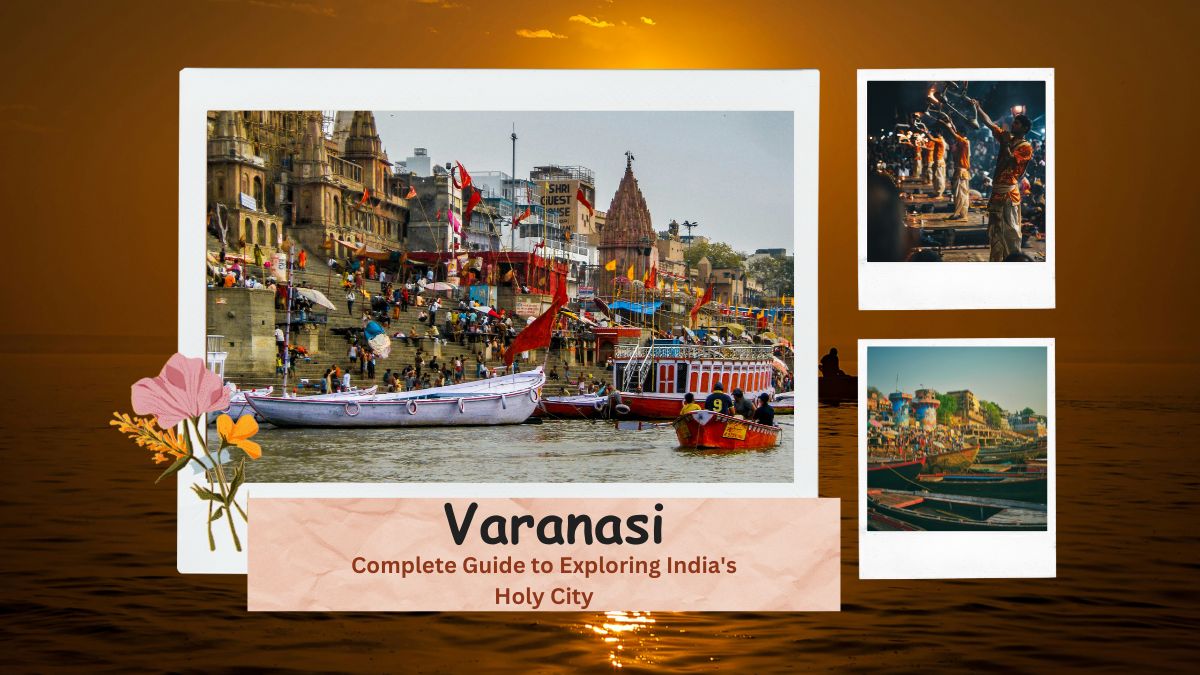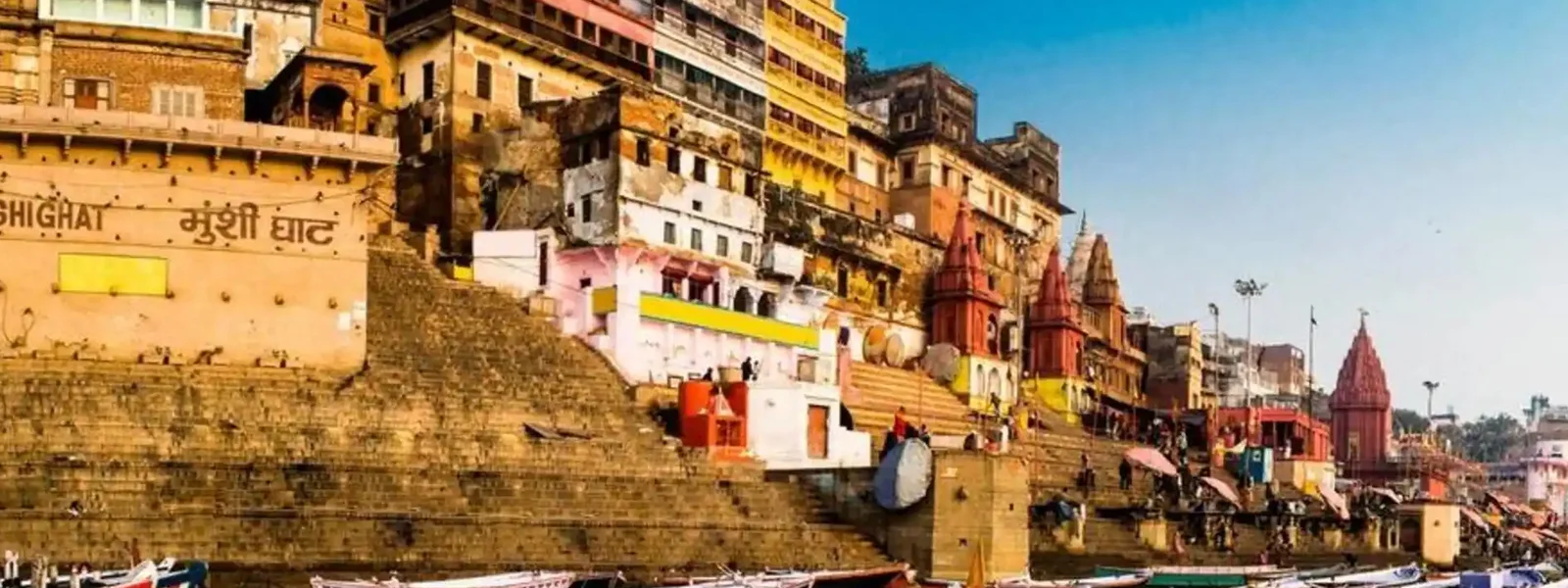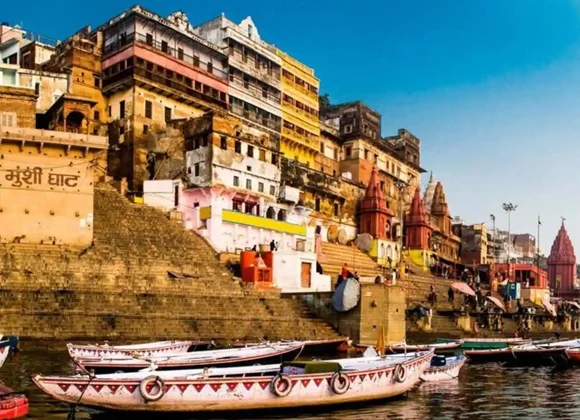Varanasi: Complete Guide to Exploring India's Holy City
Introduction
Varanasi, the eternal city, is the beating heart of Indian spirituality. Its reputation as a place of devotion, death and rebirth attracts millions of visitors each year, seeking to dive into its sacred waters or get lost in its winding streets. This article is your complete guide to exploring Varanasi, where every street corner tells an everlasting story.
History and Spiritual Meaning
Varanasi, also called Benares or Kashi, is more than a city; it is a window into the soul of Hinduism, offering believers and spiritual seekers a place of pilgrimage steeped in history, faith and the quest for the divine. Founded more than 3,000 years ago, this city is one of the oldest known civilizations, and its heart beats to the rhythm of prayers and rituals that resonate on the sacred ghats of the Ganges.
In Hindu sacred texts, Varanasi is often referred to as Kashi, derived from the Sanskrit word 'Kas', meaning 'to shine'. This name refers to the inner light of knowledge and illumination that the city promises to offer to those who seek the divine there. Kashi is considered the earthly manifestation of the ultimate abode, a bridge between the physical and the astral, where the cycles of birth and death converge into final liberation, or Moksha.
Legend has it that Varanasi is the place where Lord Shiva and his consort, Parvati, walked the Earth at the beginning of time, making this city the spiritual heart of Hinduism. Shiva, the destroyer and regenerator, is intimately linked to the city. He is celebrated as the protector of truth, knowledge and liberation.

The presence of the Ganges, the holiest river of India, adds to the sanctity of Varanasi. Hindus believe that bathing in the Ganges in Varanasi washes away sins and facilitates the transition to a better life. The river is also considered a purifying agent, offering Moksha to the souls of the departed. Cremation on the ghats of Varanasi and scattering of ashes in the Ganges are sacred rituals, performed in the belief that this frees the soul from the cycle of rebirth.
Spirituality in Everyday Life
Daily life in Varanasi is a riot of rituals and spiritual practices. From dawn, the ghats come alive with devotees practicing bathing rituals, offerings to the sun, and yoga and meditation sessions. Vedic chants, temple bells, and prayers create an ambiance that is both serene and electrifying. It is this immersion in daily spiritual practice that draws spiritual seekers to Varanasi, seeking to connect with the divine.
What to do in Varanasi
- Attend the Ganga Aarti Ceremony: A powerful spiritual experience awaits you each evening on the ghats, where priests perform rituals dedicated to the Ganges River, the nourishing mother of India.
- Exploring the Ghats: The ghats are the beating heart of Varanasi, each telling its own story. The sunrise over the ghats is a sight not to be missed, revealing the city in all its spiritual splendor.
- Visit the Temples: The Kashi Vishwanath Temple is the crown jewel of Varanasi, a sacred place dedicated to Shiva. Other temples, such as the Durga Temple and the Sankat Mochan Hanuman Temple, are also worth a visit.
- Ganges River Cruise: A boat ride offers a unique perspective of the city, ideal at sunrise or sunset.
- Get Lost in the Alleys: The soul of Varanasi lies in its narrow lanes, full of shops, markets and the bustle of daily life.
Travel Tips
- Best Time to Visit: November to February is ideal, thanks to milder weather.
- Respect for Local Customs: Varanasi is a sacred place; modest dress and a respectful attitude are required.
- Health and Safety: Choose bottled water and be careful in busy places.
- Accommodation: Varanasi offers options for all budgets, from luxury hotels to family-friendly guesthouses, with stunning views of the Ganges.
Conclusion
Varanasi is a city that must be experienced to be truly understood. It offers a unique blend of spirituality, history and culture, presenting life and death side by side with a rawness and beauty that can transform a traveler's perspective. For those looking to explore this fascinating city, Bonjour India Travel offers tailor-made tours, designed to immerse you in the very essence of Varanasi and India. Embark on a journey with us and let Varanasi reveal its deepest secrets to you, for an experience you will never forget.
9. Junagarh Fort, Bikaner
Junagarh Fort, founded in 1589 by Raja Rai Singh, is a fortified complex that was never conquered. Its palaces, such as the Chandra Mahal and the Phool Mahal, are decorated with delicate paintings, inlaid mirrors and finely carved woodwork. The fort museum houses an impressive collection of weapons, royal costumes and jewelry.
10. Lalgarh Palace, Bikaner
Lalgarh Palace, built in 1902 for Maharaja Ganga Singh, is a work of art of Indo-Sarracenic architecture. Designed by Sir Samuel Swinton Jacob, the palace blends Rajput style with European influences, providing a magnificent spectacle with its landscaped gardens, libraries and ballrooms. Part of the palace now functions as a luxury hotel, allowing visitors to live like royalty.
Conclusion
Rajasthan is a living history book, where every stone and wall tells of centuries of royalty, art and battles. Visiting these palaces is not just a trip into the past; it is a dive into the splendor and grandeur of royal India. For those looking to have a truly majestic experience, Bonjour India Travel offers tailor-made tours that will have you walking in the footsteps of kings. Discover Rajasthan in all its glory, a kingdom where history meets luxury.

